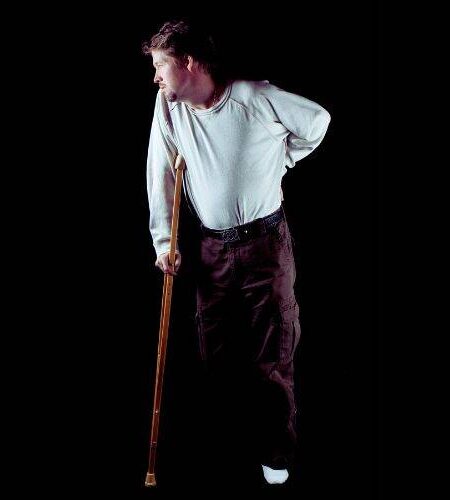Navigating daily life with the use of one crutch can be challenging, but it doesn’t have to be uncomfortable. In this comprehensive guide, we explore various strategies to prevent discomfort during one crutch gait. Drawing from personal experiences and expert knowledge, we provide practical tips to enhance mobility and minimize any potential discomfort.
1. Understanding the Basics of One Crutch Gait
In this section, we delve into the fundamental aspects of one crutch gait, explaining the proper technique and its impact on comfort. Gain insights into the mechanics of walking with a single crutch to set the foundation for a more comfortable experience.
2. Choosing the Right Crutch
The importance of selecting the right crutch cannot be overstated. Explore our guide on choosing crutches that offer optimal support, comfort, and stability during one crutch gait. LSI Keywords: crutch types, crutch materials, ergonomic crutches.
3. Maintaining Proper Posture
Achieving and maintaining the right posture is crucial for preventing discomfort. Discover expert tips on how to align your body correctly while using a single crutch, ensuring that you distribute weight evenly and reduce strain.
4. Optimizing Crutch Height
Crutch height plays a pivotal role in comfort and effectiveness. Learn how to adjust the height of your crutch to suit your individual needs, promoting a natural and pain-free gait.
5. Footwear Matters
The type of footwear you choose can significantly impact your comfort while using a crutch. Explore our recommendations for supportive and comfortable shoes that complement the one crutch gait.
6. Effective Pain Management Strategies
Dealing with discomfort? Dive into our guide on effective pain management strategies specifically tailored for individuals using one crutch. From stretching exercises to over-the-counter solutions, discover ways to alleviate pain.
7. Incorporating Assistive Devices
Enhance your mobility experience by incorporating assistive devices. Explore how accessories like crutch pads and grips can add an extra layer of comfort and support to your one crutch gait.
8. Preventing Chafing and Skin Irritation
Skin irritation is a common concern for individuals relying on crutches. Uncover tips and tricks to prevent chafing and irritation, ensuring that your mobility aid enhances your comfort rather than causing discomfort.
9. Navigating Uneven Surfaces
Uneven surfaces pose a unique challenge during one crutch gait. Learn techniques to navigate different terrains with confidence, minimizing the risk of discomfort and ensuring a smooth journey.
10. Building Strength and Endurance
Strengthening key muscle groups is essential for a comfortable and sustainable one crutch gait. Explore a targeted exercise routine designed to build strength and endurance, contributing to a more effortless mobility experience.
Preventing Discomfort During One Crutch Gait
As the focal point of our guide, this section provides in-depth insights into preventing discomfort during one crutch gait. From refining your technique to addressing common challenges, we cover it all to ensure your mobility journey is as comfortable as possible.
11. Common Challenges and Solutions
Explore common challenges individuals face during one crutch gait and discover practical solutions to overcome them. Our expert advice addresses issues like balance, fatigue, and adapting to different environments.
FAQs: Preventing Discomfort During One Crutch Gait
Q: Can I use a single crutch for an extended period without discomfort? A: While it’s possible, taking regular breaks and incorporating proper technique and accessories will significantly reduce the likelihood of discomfort.
Q: Are there specific exercises to improve my one crutch gait? A: Yes, targeted exercises focusing on core strength and balance can enhance your gait and reduce discomfort. Consult with a healthcare professional for personalized recommendations.
Q: How do I choose the right type of crutch for my needs? A: Consider factors such as your height, mobility requirements, and any existing medical conditions. Consulting with a healthcare professional or mobility aid specialist can help you make an informed decision.
Q: What role does footwear play in preventing discomfort during one crutch gait? A: Proper footwear provides stability and support, reducing strain on your body. Choose shoes with good arch support and cushioning to enhance comfort.
Q: Is it normal to experience chafing and skin irritation while using a crutch? A: While it can be common, proper adjustments to crutch height, the use of accessories, and selecting comfortable clothing can minimize chafing and irritation.
Q: How can I maintain my crutch to ensure optimal performance and comfort? A: Regularly check for any wear and tear, adjust the height as needed, and replace any worn-out accessories. Following manufacturer guidelines for maintenance is essential.
Conclusion
In conclusion, preventing discomfort during one crutch gait is achievable with the right knowledge and approach. By understanding the basics, choosing the right equipment, and incorporating effective strategies, individuals can enhance their mobility experience. Embrace these tips to make your journey with one crutch more comfortable and enjoyable.
